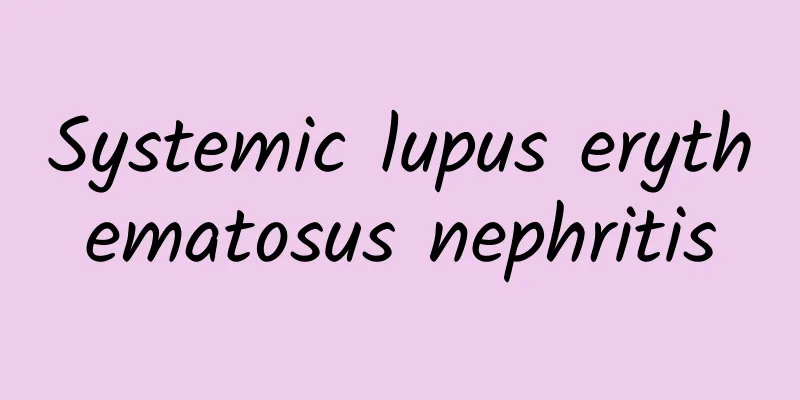How to regulate blood stasis

|
Qi and blood stasis, also known as qi stagnation and blood stasis, is a term for a disease in traditional Chinese medicine. When qi and blood stasis occurs in daily life, it often leads to poor blood circulation and poor blood circulation, which can easily lead to chest and rib distension and may cause some diseases. Therefore, it is necessary to emphasize conditioning. In addition to paying attention to certain exercise, you should also strengthen your diet and can use Chinese medicine for treatment and conditioning. What are the symptoms of blood stasis? 1. Qi stagnation and blood stasis refers to a pathological state in which blood circulation is obstructed and blood stasis occurs due to stagnation of Qi. 2. Qi stagnation and blood stasis are mostly caused by emotional injury, depression, and Qi stagnation, which lead to blood stasis. The liver is responsible for regulating qi and storing blood. The regulating function of liver qi plays a key role in regulating qi. Therefore, qi stagnation and blood stasis are often closely related to liver failure to regulate qi. 3. Clinically, common symptoms include fullness and pain in the chest and flanks, mass accumulation, and accumulation of symptoms. The lungs control qi, regulate the body's qi, and assist the heart in transporting blood. If pathogens block the lung qi and the functions of ascending and descending are impaired, over time it can lead to qi stagnation and blood stasis in the heart and lungs, resulting in symptoms such as cough, asthma, palpitations, chest pain, and blue lips and tongue. 4. Qi stagnation can lead to blood stasis, and blood stasis must be accompanied by qi stagnation. Because Qi stagnation and blood stasis are mutually causal and often coexist at the same time, it is often difficult to clearly distinguish which comes first. Factors such as sprains and trauma can lead to the simultaneous formation of qi stagnation and blood stasis. However, no matter what the cause of qi stagnation and blood stasis is, it is necessary to distinguish the priority of qi stagnation and blood stasis. How to regulate blood stasis Main symptoms: stabbing pain that is resistant to pressure, persistent pain, dull or dark complexion. Side effects: chest and flank distension, wandering pain, irritability or depression; or delirium, or madness; or hard lumps under the flanks; or bluish lips, nails, and skin; or thirst but wanting to spit out water instead of swallowing it; or purple spots on the skin, or silky blood streaks on the skin, or exposed blue veins in the abdomen, or swollen and painful blue veins in the lower limbs; or black stools like tar; or dysmenorrhea, amenorrhea, and persistent lochia, with dark purple blood mixed with blood clots. Tongue and pulse: The tongue is dark purple or has ecchymosis, the pulse is thin and wiry or deep and wiry, or it is intermittent. Treatment principles: Promote blood circulation, remove blood stasis, promote qi circulation and relieve pain. Representative prescriptions: Xuefu Zhuyu Decoction, Shentong Zhuyu Decoction, Fuyuan Huoxue Decoction, Shaofu Zhuyu Decoction, Tongqiao Huoxue Decoction, Gexia Zhuyu Decoction, etc. |
<<: How to remedy overeating without getting fat
>>: How to regulate lymphatic detoxification metabolism
Recommend
Effects of Sanlejiang
Sanlejiang is a food with health benefits made fr...
What causes spleen pain?
If spleen pain occurs, it is important to first i...
Will diabetic legs swell? Why?
Swelling of the legs is a common symptom in diabe...
Why is urine very yellow and turbid?
Urine is actually composed of some garbage waste ...
What to do if you have bloating, chest tightness and shortness of breath? Diet is the key
Sometimes, people may feel chest tightness, short...
What are the effects and benefits of moxibustion on Mingmen?
Moxibustion is a very popular Chinese medicine the...
7 Traditional Chinese Medicines for Whitening and Removing Yellowness
If you want to whiten your skin, traditional Chin...
What causes tumors on the ears?
If a tumor grows on the ear, you must pay attenti...
Can pregnant women take medicine for diarrhea?
Pregnant women need to be very clear about their ...
What to eat for uterine fibroids
When it comes to uterine fibroids, everyone is fa...
Black mole suddenly appeared on the back
Most moles are dark in color, which is a very nor...
What causes blisters when cupping?
Cupping is part of traditional Chinese medicine a...
How to definitely sprain your ankle
Some people often like to be lazy and like to be ...
Pseudo epileptic seizure symptoms
The progress of today's society is not only t...
Is Binghuang ointment useful for treating acne?
Binghuang ointment has a certain effect in treati...









